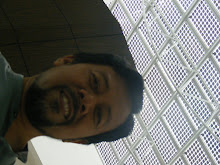


Title/Theme: Energy Efficiency Awareness, Management and Maintenance in Workplace.
Objectives:
To understand environmental & energy awareness issues.
To understand climatic principles and it influence to indoor environmental quality.
To understand and analyse building design characteristic and it relation to human comfort criteria.
To understand and investigate building maintenance issues.
To understand and implement Simple Energy Management Program in Building
To produce report writing and verbal presentation.
Methodology.
1. Set up a group of 4 students.
2. Choose one building to be studied.
3. Organise EE awareness program with the aim to improve occupant knowledge and practices on EE.
4. Carry out Building Maintenance and Energy Management Audit.
5. Investigate and make recommendations to improve Maintenance practices and EE in building
6. Produce a report on your activities, findings and recommendations.
ASSIGNMENT 1 (group of 2) : 20 marks.
Background study and literature review on topics listed below. Choose one topic for each group:-
1. GLOBAL CLIMATIC PHENOMENA AND EE & RE INITIATIVES
2. ENERGY DEMAND AND CONSUMPTION IN BUILDING SECTOR
3. EE IN BUILDING – DESIGNER’S ROLE
4. EE IN BUILDING – BUILDING OPERATOR’S ROLE
5. EE IN BUILDING – BUILDING USERS ROLE
6. EE AWARENESS, KNOWLEDGE & PRACTICE AMONG BUILDING USERS
7. CASE STUDIES
Submission;
- MS Words 300 – 500 words with full cited references.
- Graphics, table, statistic is advisable.
- Submission date (soft copy & hard copy): 12 Aug 2010 / 1 Feb 2011.
ASSIGNMENT 2 (Group Project – a group of 4) : 50 marks.
ENERGY MANAGEMENT & BUILDING STUDY
Visit to some office buildings around JB & Pontian will be arranged.
Stage 1: EE AWARENESS CAMPAIGN IN GOVERNMENT OFFICE BUILDING.
1. Developing campaign materials:
- Power point presentation,
- Posters,
- Guidebook
- Fliers.
- Questionnaires
2. Carry out EE Awareness Campaign:
- Arrange appointment.
- Organise talk & campaign exhibition.
- Distribution of materials.
- Conducting EE awareness survey.
3. Report Writing:
- Report on awareness campaign & findings.
Output/Submission Requirement:
Campaign Materials: Seminar Presentation – Progress & submission : 19 & 26 Aug 2010 / 1 - 15 Feb 2011.
EE Awareness Campaign at the building identified above: 23 - 30 Sept 2010 / 22 Feb - 8 March 2011.
Stage 2: BUILDING STUDY
Choose building / premise to be studied.
This assignment require investigation of two (2) main areas :-
1. Building Operation & Maintenance.
Study and investigate
Background information of the building & its occupants
Examine the building design and construction in relation to climatic design principles.
Examine the building operation and maintenance.
Examine building maintenance issues and identify causes and potential solutions.
Propose improvement strategies on building maintenance and operations through retrofitting such as;
Propose appropriate strategy and approach to improve;
Building condition.
Occupants Comfort.
Propose improvement strategies through behavioral change;
To enhance maintenance behavior and practices,
Other methods to improve building condition.
2. Energy Management Program
Examine the building operation and management system, structure and practices in the organisation.
Investigate indoor building condition and the level of comfort condition provided for the occupant / building users.
Carry out walk through energy audit – you may audit the whole building or only a typical floor (verify with your tutor).
Investigate actual monthly energy consumption from monthly bill or energy meter reading.
Identify any information of previous and current energy consumption recorded from electricity bill and through meter readings.
Identify and measure total floor area (AC & Without AC)
Carry out energy audit of all types of electrical light fittings, AC & ventilation systems, office/electrical appliances used in the building.
Identify and calculate hours of used daily, monthly and annually
Carry out survey on the EE awareness, knowledge and practice level among occupant in the building.
Interview using questionnaire distributed to Building Users and Building operator.
Observe and Record any significant information related to user behaviors and building condition in relation to energy consumption patterns
Identify & records any potential of Energy Saving Measures (ESMs).
Calculate; - total energy consumption & load apportioning; determine BEI, AEI, LEI, OEI, OCI.
Proposed improvement strategies and Energy Saving Measures (ESMs) such as through retrofitting;
Introducing innovative solution to building deterioration, comfort problem and energy wastage.
Enhance EE by introducing passive and/ore active design solution.
Other method to improve building condition & EE.
Analysis, discussion and conclusions.
Output/Submission Requirement:
Report on A4.
Softcopy (CD) ;
MS Words
Slides MS PowerPoint.
1A2 sheets (summary).
Duration:
First briefing: Week 4
Submission & Seminar Presentation : 14 & 21 Oct 2010 / 5 & 12 April 2011.
TEST (Individual) : 25 marks.
EE & RE IN BUILDING – THE PRACTICAL SOLUTIONS








